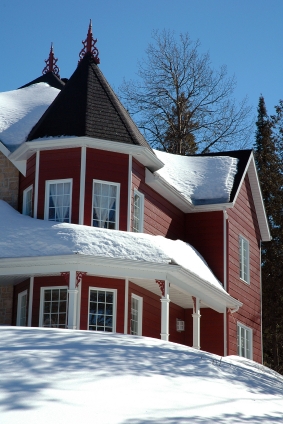 The most common enemy to a warm home during the winter season is heat loss that is due to the continuous reciprocal movement of air inside the house. The process of infiltration occurs when the cold winter air finds a way to move into the house and push the warm air out of the house. According to many roofing contractors, heat loss occurs in walls, doors, floors, and windows; however, more heat loss happens due to the infiltration of air in the roofing system.
The most common enemy to a warm home during the winter season is heat loss that is due to the continuous reciprocal movement of air inside the house. The process of infiltration occurs when the cold winter air finds a way to move into the house and push the warm air out of the house. According to many roofing contractors, heat loss occurs in walls, doors, floors, and windows; however, more heat loss happens due to the infiltration of air in the roofing system.
The impact this has during winter is translated to increased utility bills. If cold air gets into the house, the furnace must operate more to eliminate the cold air, which translates into higher electricity bills. To prevent this from happening, it is important to prepare the house for winter to minimize the movement of the warm air from the inside the house to the outside environment.
Heat Loss Sources
One basic method to prevent heat loss is to be aware of all possible sources of air leakage. A major contributor to the escape of warm air is through walls, floors, windows, doors, and ceilings. Some of the possible locations of these leaks could be in thermal bridges, cracks, and joints. By determining the sources, a strategy can be planned to conserve heat during the winter.
Enhancing Home Insulation
To reduce air movement, focus needs to be made on air infiltration and air leakage. An investment should be made in proper insulation to reduce air movement.
- Attic Insulation – Without the proper amount of insulation in the attic, energy cannot be conserved during winter months. Poor attic insulation allows a significant amount of warm air to escape. It must be determined if there is an adequate amount of this material in the attic to ensure that it is still sufficient enough to conserve energy.
- Window and Door Replacement – Another source of warm air leakage is through doors and windows. If the windows are very old, they are probably inefficient in conserving energy. The preferable choice is to replace the windows to prevent heat loss and raise their thermal efficiency. If this is not financially possible, thermal drapes can be used to cover the windows. In addition, weather-stripping should be installed to doors during the winter to prevent warm air from escaping and cold air from moving into the house.
- Wall Insulation – Forty-five percent of the warm air that escapes from a house occurs through the walls. Wall insulation can decrease heat loss and help save money on utility bills. Solid wall insulation is an efficient method to block the wasting of energy and to help with energy bills. There are two ways to insulate walls, either externally or internally.
- Insulation of Vents and Other Areas – Heat loss can also be decreased by insulating vents, electrical outlets and switches, concrete block sill plates in the basement, and recessed lighting in the attic. Warm air also escapes through the fireplace. It is highly recommended that ‘airtight’ fireplace doors be installed to prevent heated air from escaping through the chimney.
To prevent heat loss during cold winter months, the focus should be on insulation to prevent air leakage and infiltration. Energy savings, reduced heat loss, and decreased energy consumption during the winter will help a house be more comfortable and save money during these hard times. Since it is vital to concentrate on making a house air tight, it is important to consult a professional roofing expert to examine the energy efficiency of the entire house and enhance those areas where more protection is needed. This will help prevent heat loss during those cold winter months!
Are you looking for a roof company Houston to prevent heat loss from your roof? Schulte Roofing handles the great Houston area as well as the Brazos Valley and can help all customers with their roofing problems!
